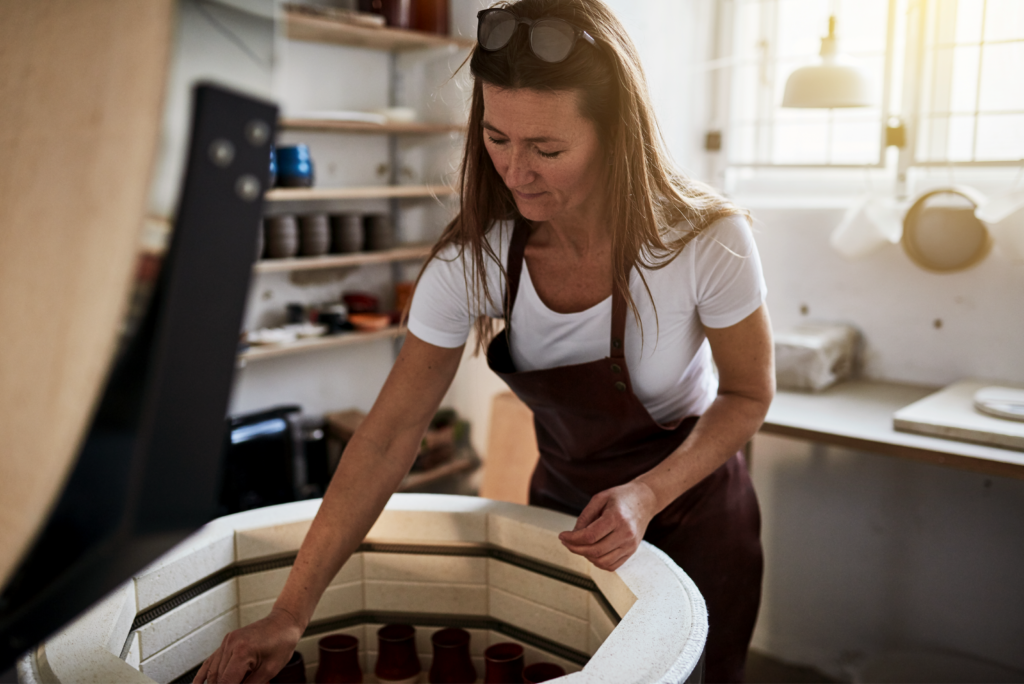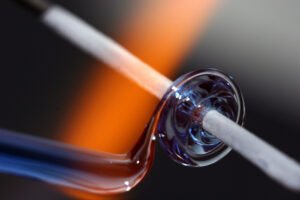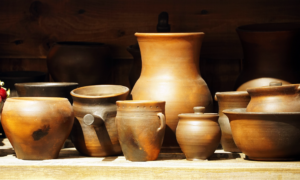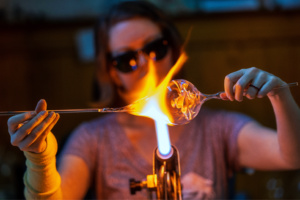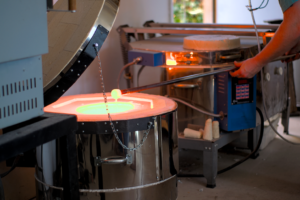Pottery has existed since the beginning of civilization, and products derived from this process are still being used by us. Pottery is the art through which artisans create utensils and containers from clay. These clay materials are molded and then baked at high temperatures so that they can solidify and be used for years to come. Nowadays, commercial pottery or ceramics are produced in factories using the pottery kiln or ceramic kiln, while studio pottery is produced by individual craftsmen. Either way, an essential part of the process is the firing of these pieces in a specialized kiln.
Pottery as art
Throughout history, clay has not only been used to create functional items like bowls, vases, and plates, but also detailed works of art. Clay artists bring their visions to life with the exploration of shape, function, and texture through this malleable material.
Their creative process is treasured because it shows uniqueness, especially when pieces are made by hand. The beauty of handmade pieces lies in their imperfection, making them truly special. Contemporary ceramicists are changing the way we look at pottery, we now approach these pieces with not just function in mind, but also beauty, concepts, and ideas.
The pottery medium may seem limited to the average person, but artists all around have proved that notion wrong. From tiles to portraits, ceramic artists produce works that astound all sorts of audiences. There are so many styles that have been achieved through the mix of techniques, and the textures, shapes, and effects on this medium seem to be endlessly varied.
Is a pottery kiln necessary for pottery?
Pottery made from ceramic materials, requires the use of a kiln so that the pieces can harden well enough for future use. Ceramic products that are not fired in a kiln may be extremely fragile, so they have the possibility of breaking easily after just a few uses. So yes, a pottery kiln will be necessary to maintain good quality.
The final characteristics of a clay piece are determined by the composition and preparation of the clay mix that’s being used and also the temperature at which it is fired. Glazing can also be added to pieces by firing them a second time to fuse the glaze into the body.
Pottery pieces require high temperatures so that the chemical and physical reactions in the clay permanently alter them and they become functional. This is where pottery kilns come into play. The pottery kiln comes in a variety of sizes, price ranges, and styles. These days, potters are more likely to choose electric kilns, as they are easier to control and even program.
This modality allows artists to be fully aware of the temperature changes their pieces are going through. More traditional kilns were usually made from bricks and were fueled by wood or coal. The only exception in which a pottery kiln may not be required is when using special clays such as oven-baked clay, air-dry clay, or polymer clay. These are usually much more expensive, so they are ideal for one-of-a-kind, smaller pieces.
The firing process
Pottery kilns today offer a lot of precision when it comes to the pottery kiln temperature and timing of firings. In order to create viable pieces, it is extremely important to carefully select your firing method and follow its steps correctly. It is also very important to know what the pieces go through each step of the way so that the timing of each step is set appropriately.
Stage 1: Sculpturing and drying
Once a piece is fully sculpted, it must be left to dry until it is bone dry, a term that means the piece is at room temperature but is not cool to the touch. Coolness indicates that evaporation is still occurring.
Once your piece is bone dry, the first stage it will go through inside of the kiln is atmospheric drying. As the clay is slowly heated inside of the chamber, the remaining water will evaporate out of the clay. If the clay is heated too quickly, the water will turn to steam right inside the clay body, allowing it to expand, which will have explosive results in the pot.
If done at the right speed, there will be no problems and the boiling point of water (212° F and 100° C at sea level) will be reached. At this stage, all water should have evaporated out of the clay piece. This will result in the clay compacting, so it will experience some shrinkage.
After this first stage, all carbon, organic materials, and sulfur inside the clay material will be burned off. This generally occurs when a temperature between 572° F and 1470° F (300° C and 800° C) is gradually reached.
Always remember that your firing schedule must allow for a slow build-up of heat. After burning all organic material, chemically bonded water will escape from the pottery pieces when they reach between 660° F and 1470° F (350° C and 800° C). If the water heats too quickly it might explode. Gradual increase of temperature is again crucial to avoid accidents.
Stage 2: Quartz inversion
The next stage is quartz inversion, which refers to a process in which quartz (also known as silica or silica oxide) inside of the clay will go through a change in its crystalline structure. This will cause the pottery to increase in size by 2 percent while heating and to lose this 2 percent as it cools. Once more, the kiln temperature must be increased (and later decreased) slowly through the change.
Stage 3: Sintering
After that comes sintering, which is when clay particles begin to fuse. This occurs at about 1650° F (900° C), and the pieces are no longer considered clay, they officially become ceramic. If there is an intention to add wet, raw glazes to the pottery without it disintegrating, the appropriate temperature to reach would be about 1730° F (945° C) which allows for sintering, but pieces remain porous and not yet vitrified. This last option is commonly known as bisque firing.
Stage 4: Vitrification
Once a glaze is added, potters look to reach the vitrification stage. Vitrification is a gradual process during which the materials that dissolve most easily do so. They melt and fill in the spaces between the more refractory particles.
In the end, only maturation and cooling are left. Different clays mature at different temperatures, depending on their composition. It is important to familiarize yourself with each type of clay’s maturation temperature needs. After this step, cooling the chamber back to room temperature very carefully will ensure that none of the pieces develop cracks.
It is a true science to properly fire pottery, and kilns nowadays allow us to be fully aware and in control of the changes going on inside of the chamber. Modern kilns are not only convenient but very nifty, since times and temperatures are even digitally programmed. This takes a big pressure off potters, who may use the extra time to create even more unique pieces while their kiln works for them.
Art deco pottery
One of many styles that had a big impact on the pottery world was art deco. This is an eclectic style that combines traditional craft motifs with Machine Age imagery and materials. art deco’s impact has been primarily on the decorative arts including architecture, interior and industrial design, fashion design, and graphic arts.
It started in Paris in the early 20th century, as an opposing response to the rather organic, soft art nouveau style. Art Deco favored the use of geometric and angular shapes, as well as a bolder use of colors.
Art Deco was widely developed in Great Britain, where we find a truly remarkable artist who contributed to this style: Clarice Cliff. As one of the most celebrated exponents of this style, she stood out by creating startling and paradigm-breaking works that are extremely valuable collectibles nowadays. Her pieces, while fully functional, were radically separated from traditional design.
Some of her most creative shapes came in vases, but she was a master at adapting the Art Deco aesthetic to other areas in the domestic sphere, expressing her personal voice through practical cups, plates, jugs, and teacups.
She developed some teaware sets that truly tested the conventions of pottery back in her day, so her pieces were ahead of her time. She experimented with ways to display her designs on dishware, whether it be a sunburst, a cottage, or a butterfly. Her avant-garde designs were very much influenced by the biggest artists of the time, rendering her pieces a very iconic character.
The importance of this art style
Highlighting this style is remarkable because of all the rules that were broken during that exciting era, but Art Deco is only the tip of the iceberg when it comes to pottery styles. The crossing between functionality and aesthetics has attracted artists all over the world for a reason: pottery allows for expression and utilitarianism simultaneously.
It can be part of people’s daily lives while showing true personal style. Pottery and its different styles show us that some clay, a lot of heat, and human imagination is all that is needed to come up with the most original and treasured pieces, which can become valuable heirlooms over time.
